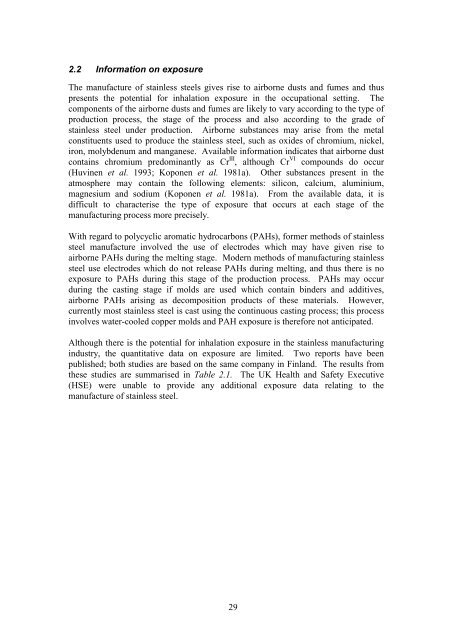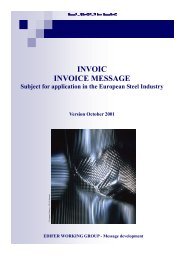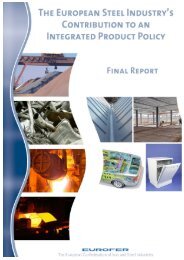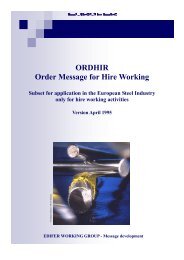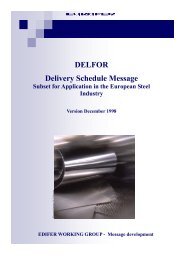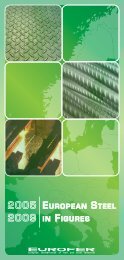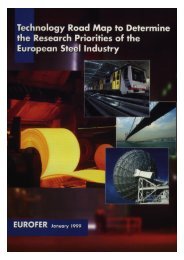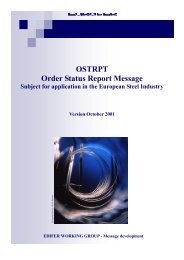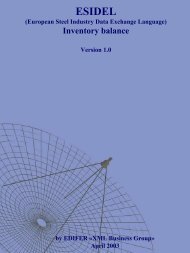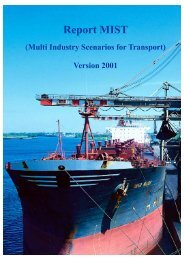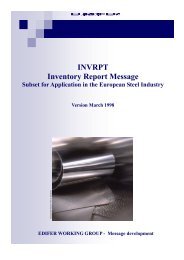manufacture, processing and use of stainless steel - International ...
manufacture, processing and use of stainless steel - International ...
manufacture, processing and use of stainless steel - International ...
You also want an ePaper? Increase the reach of your titles
YUMPU automatically turns print PDFs into web optimized ePapers that Google loves.
2.2 Information on exposure<br />
The <strong>manufacture</strong> <strong>of</strong> <strong>stainless</strong> <strong>steel</strong>s gives rise to airborne dusts <strong>and</strong> fumes <strong>and</strong> thus<br />
presents the potential for inhalation exposure in the occupational setting. The<br />
components <strong>of</strong> the airborne dusts <strong>and</strong> fumes are likely to vary according to the type <strong>of</strong><br />
production process, the stage <strong>of</strong> the process <strong>and</strong> also according to the grade <strong>of</strong><br />
<strong>stainless</strong> <strong>steel</strong> under production. Airborne substances may arise from the metal<br />
constituents <strong>use</strong>d to produce the <strong>stainless</strong> <strong>steel</strong>, such as oxides <strong>of</strong> chromium, nickel,<br />
iron, molybdenum <strong>and</strong> manganese. Available information indicates that airborne dust<br />
contains chromium predominantly as Cr III , although Cr VI compounds do occur<br />
(Huvinen et al. 1993; Koponen et al. 1981a). Other substances present in the<br />
atmosphere may contain the following elements: silicon, calcium, aluminium,<br />
magnesium <strong>and</strong> sodium (Koponen et al. 1981a). From the available data, it is<br />
difficult to characterise the type <strong>of</strong> exposure that occurs at each stage <strong>of</strong> the<br />
manufacturing process more precisely.<br />
With regard to polycyclic aromatic hydrocarbons (PAHs), former methods <strong>of</strong> <strong>stainless</strong><br />
<strong>steel</strong> <strong>manufacture</strong> involved the <strong>use</strong> <strong>of</strong> electrodes which may have given rise to<br />
airborne PAHs during the melting stage. Modern methods <strong>of</strong> manufacturing <strong>stainless</strong><br />
<strong>steel</strong> <strong>use</strong> electrodes which do not release PAHs during melting, <strong>and</strong> thus there is no<br />
exposure to PAHs during this stage <strong>of</strong> the production process. PAHs may occur<br />
during the casting stage if molds are <strong>use</strong>d which contain binders <strong>and</strong> additives,<br />
airborne PAHs arising as decomposition products <strong>of</strong> these materials. However,<br />
currently most <strong>stainless</strong> <strong>steel</strong> is cast using the continuous casting process; this process<br />
involves water-cooled copper molds <strong>and</strong> PAH exposure is therefore not anticipated.<br />
Although there is the potential for inhalation exposure in the <strong>stainless</strong> manufacturing<br />
industry, the quantitative data on exposure are limited. Two reports have been<br />
published; both studies are based on the same company in Finl<strong>and</strong>. The results from<br />
these studies are summarised in Table 2.1. The UK Health <strong>and</strong> Safety Executive<br />
(HSE) were unable to provide any additional exposure data relating to the<br />
<strong>manufacture</strong> <strong>of</strong> <strong>stainless</strong> <strong>steel</strong>.<br />
29


